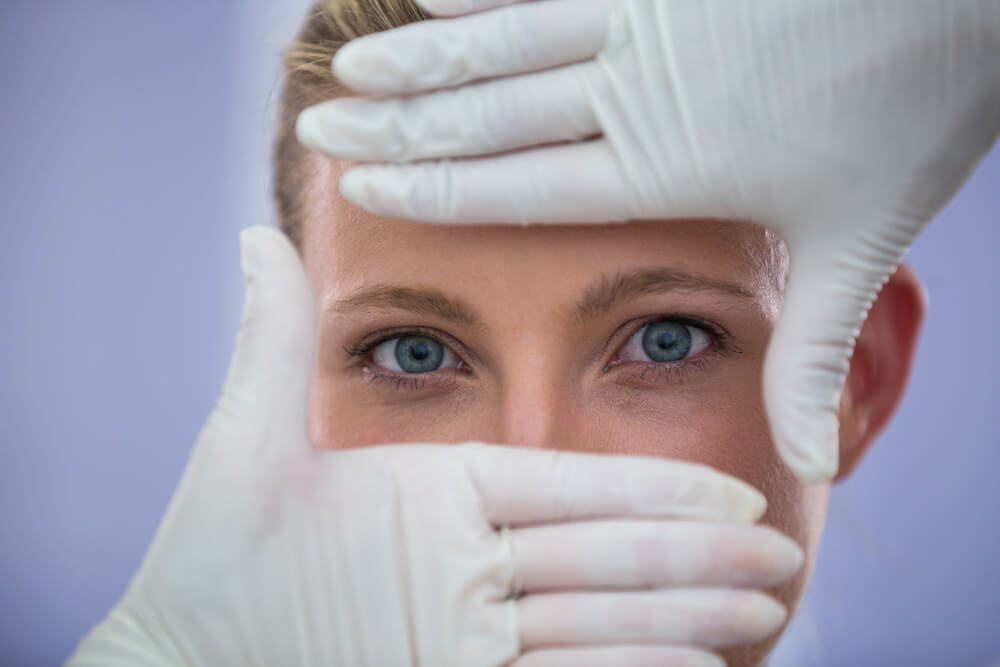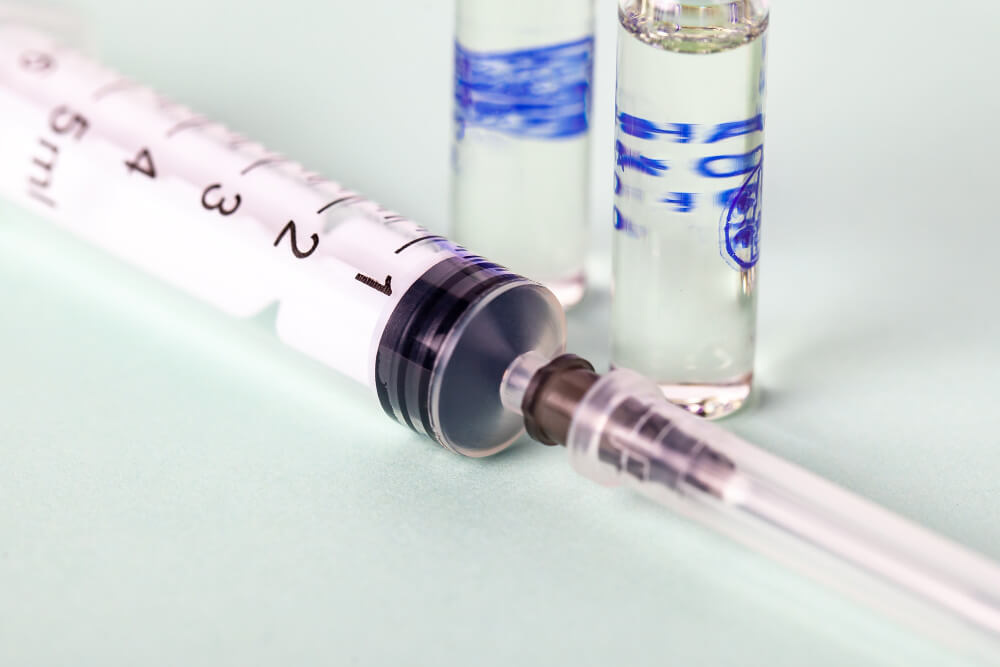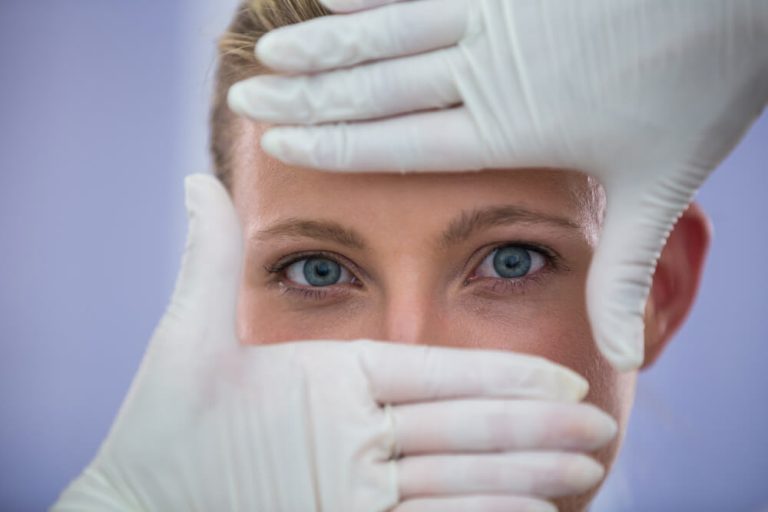Exosome Training: Unlocking the Future of Regenerative Medicine
The world of medicine is constantly evolving, with new discoveries pushing the boundaries of what we thought was possible for health, healing, and longevity. At the forefront of this revolution is a field that sounds like science fiction but is rapidly becoming a clinical reality: regenerative medicine. Central to this new frontier are tiny, powerful particles known as exosomes, which are changing how we understand cellular communication and tissue repair.
As interest in these microscopic messengers grows, so does the demand for highly skilled practitioners who can safely and effectively harness their potential. This is where specialized education becomes paramount. For healthcare professionals looking to lead the charge in this innovative space, comprehensive exosome training is not just an advantage; it is an absolute necessity for providing cutting-edge care and achieving optimal patient outcomes.
This guide will explore the fascinating world of exosomes, from their fundamental biology to their therapeutic applications. We will delve into what this training entails, who it benefits, and why it represents a critical step forward for any practice focused on functional medicine, anti-aging, and next-generation wellness protocols.

What Exactly Are Exosomes?
To understand their therapeutic power, we first need to know what exosomes are. Imagine your body is a vast, bustling country with trillions of citizens, or cells. For this country to function, these citizens need to communicate constantly. Exosomes are the high-speed postal service, carrying vital messages and packages from one cell to another.
More scientifically, exosomes are a type of extracellular vesicle, which is a tiny, membrane-bound bubble released by cells. They are incredibly small, typically measuring between 30 and 150 nanometers in diameter. For perspective, that is thousands of times smaller than the width of a human hair. They are not cells themselves; they are cell-free messengers.
Inside each exosome is a cargo of important biomolecules, including proteins, lipids, and various forms of RNA like messenger RNA (mRNA) and microRNA (miRNA). When an exosome is released by a ‘donor’ cell, it travels through bodily fluids like blood or lymph until it finds a ‘recipient’ cell. It then fuses with that cell and delivers its contents, effectively giving the recipient cell a new set of instructions.
This process of cell-to-cell communication is fundamental to countless biological processes. It is how cells coordinate everything from immune responses and inflammation to tissue regeneration and healing. By carrying specific signals, exosomes can tell other cells to grow, repair damage, or even self-destruct if they become dysfunctional, playing a crucial role in maintaining homeostasis, or balance, within the body.

How Do Exosomes Work in the Body?
The mechanism of action for exosomes is both elegant and complex. Their function is entirely dependent on the cargo they carry, which is determined by the type and state of the cell that produced them. For example, exosomes secreted by healthy young stem cells are packed with growth factors and anti-inflammatory signals.
When these potent exosomes reach damaged or aging tissues, they deliver their payload. The recipient cells absorb these materials and are prompted to behave differently. The delivered proteins can act as building blocks for repair, while the genetic material, like miRNA, can regulate gene expression in the target cell. This can trigger a cascade of beneficial effects.
This might mean stimulating resident stem cells to activate and begin repairing tissue. It could involve instructing immune cells to reduce inflammation, which is a key driver of many chronic diseases and aging processes. It can also promote angiogenesis, the formation of new blood vessels, which is vital for delivering oxygen and nutrients to healing areas.
Because exosomes are natural biological products, they are generally well-tolerated by the body. Their small size allows them to travel throughout the body and even cross barriers that larger cells cannot, like the blood-brain barrier. This unique ability opens up therapeutic possibilities for a wide range of conditions that were previously difficult to address.

Why is Exosome Therapy Gaining So Much Attention?
The excitement surrounding exosome therapy stems from its potential to offer the benefits of stem cell therapies without using live cells. While stem cells are remarkable, using them directly can carry risks, such as rejection or unwanted growth. Exosomes, being cell-free, bypass many of these concerns while still delivering the powerful regenerative signals that make stem cells so effective.
In the aesthetic field, exosome therapy is celebrated for its ability to rejuvenate the skin. When applied topically or injected, exosomes can signal skin cells to produce more collagen and elastin, reducing the appearance of fine lines, wrinkles, and scars. They are also being used to combat hair loss by stimulating dormant hair follicles and improving scalp health.
Beyond aesthetics, the therapeutic potential is vast. Researchers are exploring the use of exosomes for orthopedic conditions like osteoarthritis, where they can help reduce joint inflammation and promote cartilage repair. There is also significant interest in their application for autoimmune diseases, neurological disorders, and cardiovascular health.
The growing body of scientific work is a major driver of this attention. As more studies are published, the clinical evidence for exosome treatments continues to build, providing practitioners with a stronger foundation for their use. This shift from theoretical potential to evidence-based application is what makes the field so compelling for both patients and providers.

What Does Exosome Training Involve for Practitioners?
Given the complexity and novelty of exosome therapy, proper training is non-negotiable. It is not a skill one can pick up from a simple weekend workshop. Comprehensive exosome training programs are designed to equip healthcare professionals with a deep, science-backed understanding of this modality.
Key components of a robust curriculum include the fundamental biology of extracellular vesicles. Practitioners must learn how to differentiate between various types of vesicles and understand their mechanisms of action. This foundational knowledge is crucial for making informed clinical decisions and for explaining the therapy to patients.
Training also covers the practical aspects of sourcing and characterization. Practitioners learn about the different sources of exosomes, most commonly from mesenchymal stem cells (MSCs), and the importance of using products from reputable, certified labs. A critical part of this involves learning how to verify the quality, purity, and concentration of an exosome product, which is essential for ensuring both safety and efficacy.
Furthermore, education programs detail specific clinical protocols. This includes dosage calculations, methods of administration such as intravenous infusion or direct injection, and combining exosome therapy with other regenerative modalities for synergistic effects. A deep dive into the science of these particles is essential, and many resources are available for those who wish to go further into studying exosomes and extracellular vesicles at a molecular level.
Finally, training must address the regulatory landscape and ethical considerations. As an emerging therapy, the rules and guidelines are still evolving. A qualified practitioner needs to be up-to-date on the current regulatory status in their region to practice legally and ethically, ensuring patient safety remains the highest priority.

Who Should Consider Getting Certified in Exosome Therapies?
Certification in exosome therapy is ideal for a wide range of healthcare professionals who are committed to being at the leading edge of medicine. This includes medical doctors (MDs), doctors of osteopathic medicine (DOs), nurse practitioners (NPs), physician assistants (PAs), and naturopathic doctors (NDs) who are looking to expand their treatment offerings.
Clinic owners and medical directors who want to integrate regenerative medicine into their practice will find this certification invaluable. It not only provides them with the clinical knowledge but also the confidence to lead their team and establish their clinic as a center of excellence in this advanced field. It is a powerful differentiator in an increasingly competitive healthcare market.
Researchers and scientists who are studying cellular biology and regenerative medicine can also benefit immensely. The clinical perspective gained from such training can help bridge the gap between laboratory discoveries and real-world applications, fostering innovation and accelerating the development of new therapies.
Ultimately, anyone passionate about functional medicine, anti-aging, and longevity will see the immense value. A formal certification in exosome and regenerative therapies provides a structured, comprehensive pathway to mastering these protocols. For those already in the field, it can serve as a vital update, as exemplified by established organizations like the American Academy of Anti-Aging Medicine, which also offers an exosome therapy course to keep its members current.

How Are Exosomes Sourced and Prepared for Clinical Use?
The quality of an exosome product begins at its source. The most common and well-regarded sources are perinatal tissues, such as umbilical cord Wharton’s jelly or amniotic fluid. These tissues are rich in young, vibrant mesenchymal stem cells. MSCs are prized for their potent regenerative and anti-inflammatory properties, and the exosomes they secrete are packed with beneficial growth factors and signaling molecules.
These source materials are obtained from healthy, full-term births with full maternal consent, following strict ethical guidelines and screening protocols. The use of perinatal tissues is considered superior because the cells are pristine, immunoprivileged, and have not been exposed to the environmental toxins or aging processes that affect adult-derived cells.
Once the MSCs are isolated and cultured in a laboratory setting, they begin to secrete exosomes into their culture medium. The next step is a highly technical process of isolation and purification. Advanced techniques like differential ultracentrifugation or tangential flow filtration are used to separate the tiny exosomes from other cellular debris and components in the medium.
After isolation, the product undergoes rigorous quality control testing. This includes verifying the concentration of exosomes, confirming their size and morphology, and screening for any contaminants like bacteria or endotoxins. Only products that meet stringent purity and safety standards are cleared for clinical use, ensuring that practitioners are working with a safe and reliable therapeutic agent.

What is the Role of Scientific Societies and Research?
The rapid growth of the exosome field is supported by a global community of scientists and clinicians dedicated to advancing the science responsibly. Organizations play a critical role in establishing standards, promoting collaboration, and disseminating credible information. The premier body in this space is the International Society for Extracellular Vesicles, or ISEV.
ISEV brings together researchers from around the world to share findings, develop standardized methodologies for studying exosomes, and publish guidelines for the field. Their work helps ensure that research is conducted with scientific rigor, which is essential for building a reliable body of evidence and translating laboratory findings into safe and effective clinical practices.
Alongside these societies, ongoing research and clinical trials are the engine driving the field forward. Scientists are continuously exploring new applications for exosomes, from targeted drug delivery systems that can carry chemotherapy directly to cancer cells, to diagnostic tools that can detect diseases like cancer from a simple blood test, often called a liquid biopsy.
For anyone interested in the current state of human research, a valuable resource is the official trial registry. A quick search on platforms like ClinicalTrials.gov reveals hundreds of ongoing and completed studies investigating the therapeutic use of these particles. Reviewing the list of active clinical trials involving exosomes provides a real-time glimpse into the future of medicine and the incredible breadth of conditions that may one day be treated with this technology.

How Does Exosome Training Fit into a Broader Longevity Practice?
Exosome therapy does not exist in a vacuum. It is a powerful tool within the much larger toolkit of longevity and functional medicine. A truly comprehensive approach to health and anti-aging requires a practitioner to understand the intricate web of systems that contribute to wellness, from metabolic health to cardiovascular function.
This is why advanced training in one area often complements education in others. A practitioner skilled in exosome therapy can achieve even better patient outcomes when they can also address underlying issues like chronic inflammation, hormonal imbalances, or poor metabolic health. The body is a holistic system, and the most effective treatments are those that honor this interconnectedness.
For instance, understanding a patient’s cardiovascular risk profile is crucial for any anti-aging strategy. Knowledge in this area allows a practitioner to create a more complete wellness plan. This is why many leading clinicians pursue advanced lipidology training for preventative care alongside their regenerative medicine education. This dual expertise enables them to address both systemic health and targeted tissue repair.
Integrating exosome training into a practice focused on longevity means viewing it as one component of a personalized, multi-faceted strategy. It can be used to accelerate healing after other procedures, manage inflammation that contributes to chronic disease, and provide a systemic regenerative boost that supports the body’s overall vitality and resilience against the aging process.

What Can a Patient Expect from an Exosome Treatment?
For a patient, the journey with exosome therapy begins with a thorough consultation. A qualified practitioner will take a detailed medical history, discuss the patient’s health goals, and determine if they are a good candidate for the treatment. This is also an opportunity for the patient to ask questions and for the practitioner to set realistic expectations about potential outcomes.
Once a treatment plan is established, the procedure itself is typically straightforward and minimally invasive. The method of administration depends on the condition being treated. For localized issues like joint pain or aesthetic concerns, exosomes may be delivered via direct injection into the target area. This ensures the highest concentration of regenerative signals reaches the tissues that need them most.
For systemic anti-aging or to address widespread inflammation, an intravenous (IV) infusion is often the preferred method. During an IV treatment, the patient relaxes comfortably while the exosome solution is slowly administered into their bloodstream. This allows the exosomes to circulate throughout the body, delivering their regenerative cargo to various tissues and organ systems.
Post-treatment, there is typically little to no downtime, and patients can resume their normal activities. The effects of exosome therapy are not instantaneous, as it works by stimulating the body’s own natural repair processes. Patients may begin to notice improvements over the course of several weeks to months as cells respond to the new instructions and tissues begin to regenerate.

What Does the Future Hold for Exosome Technology?
The future of exosome technology is exceptionally bright, with potential applications that extend far beyond current uses. The pace of research is accelerating, and innovations are emerging that could fundamentally change how we diagnose and treat disease. One of the most exciting areas is in targeted drug delivery.
Scientists are working on engineering exosomes to carry specific therapeutic agents, like chemotherapy drugs or gene-editing tools, directly to diseased cells while leaving healthy cells untouched. This ‘smart bomb’ approach could dramatically increase the effectiveness of treatments while minimizing side effects, representing a paradigm shift in pharmacology.
In diagnostics, exosomes hold promise for creating highly sensitive liquid biopsies. Because cells, including cancerous ones, release exosomes into the bloodstream, analyzing the contents of these vesicles could allow for the early detection of diseases from a simple blood sample. This could lead to earlier diagnoses and significantly improved prognoses for many conditions.
As the technology matures, we can also expect to see more refined and specialized exosome products tailored for specific conditions. The ability to customize the exosomal cargo could lead to highly personalized therapies. The journey is just beginning, and for practitioners, staying educated is the only way to keep pace with an industry that is redefining the future of health.
This rapidly advancing field underscores the critical importance of continuous learning. The practitioner who invests in their education today will be the leader who shapes the regenerative medicine landscape of tomorrow, offering their patients the most sophisticated and effective therapies available.
Frequently Asked Questions

How can I effectively explain exosome therapy to patients without making non-compliant claims?
Start by using a simple analogy, such as comparing exosomes to "cellular messengers" that carry important regenerative signals to target cells. Emphasize that these are not cells themselves but powerful signaling vesicles that help facilitate the body’s natural repair and rejuvenation processes. Keep the language clear and focus on the supportive role they play in enhancing skin health, reducing inflammation, or promoting hair growth.
To remain compliant, it is crucial to avoid definitive claims of "curing" or "treating" specific diseases. Instead, frame the benefits around aesthetic improvements and supporting the body’s own functions, such as "improving skin texture and tone" or "supporting a healthy scalp environment." Always manage patient expectations by explaining that results can vary and multiple sessions may be needed for optimal outcomes.

What is a realistic timeline for seeing a return on investment (ROI) after introducing exosome treatments?
The timeline for achieving a positive ROI on exosome treatments typically ranges from 6 to 12 months, depending on several key factors. Your initial investment in high-quality products, staff training, and targeted marketing will be the largest upfront costs. Practices that successfully integrate exosomes into existing treatment plans and effectively market them to their current patient base often see a faster return.
To accelerate your ROI, focus on creating attractive treatment packages that bundle exosomes with other popular services like microneedling or energy-based devices. Educating patients on the enhanced results of these combination therapies can significantly increase uptake and revenue per patient. Consistently tracking your costs, treatment volume, and revenue will provide clear data to measure your financial success and adjust your strategy as needed.

Besides standalone treatments, how can exosomes be combined with other aesthetic procedures?
Exosomes are exceptionally versatile and serve as powerful adjuncts to many popular aesthetic treatments, significantly boosting their efficacy and reducing downtime. For example, applying exosomes topically immediately after microneedling or fractional laser resurfacing can accelerate healing and amplify collagen stimulation. The micro-channels created by these procedures allow for deeper penetration of the exosomes, delivering regenerative signals directly where they are needed most.
They can also be combined with procedures like PRP (Platelet-Rich Plasma) for hair restoration, where they enrich the scalp’s cellular environment and support follicle health. In post-procedure care for more intensive treatments, exosomes can help mitigate inflammation and redness, leading to a more comfortable recovery. Offering these combination therapies positions your practice as a cutting-edge provider and justifies a premium service price.
Discover the most comprehensive functional medicine training, longevity training, and biohacking certification programs designed specifically for healthcare professionals, medics, and clinic owners who want to master regenerative medicine protocols and anti-aging therapies.







